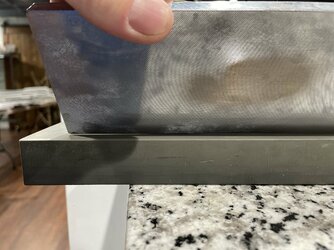The famous bard advised “to thine own self be true”. Good advice.
For some time I was skeptical of the whole convex hone thing. Today I am here to offer opinion and testimony.
I have had razors honed by some well known masters here: Doc226, Ulrik Beyer (Koraat), Ertan Suer (Rasoir Sabre), Brian Brown (Brown Razor Works); there are others. Many different media have been used: Coticule, Naniwa SS, Arkansas, J nat, Welsh Slate, film, and the list could go on.
I wield a decent hone myself. Hardly in the league of the aforementioned gentlemen but not bad.
However, with all being said and after countless shaves with dozens of straight razors, I can say unequivocally that the best edges I have used to date were those on hollow/extra hollow blades honed on convex stones by Jarrod at The Superior Shave. Yes. They are that good. You may not agree. That’s alright. The world is an arena for various opinions and we should all be grateful that it is. But do remember “to thine own self be true”.
My point here is:
If you have not tried a razor honed by a knowledgeable craftsman who knows how to use a convex hone…try it one time. I’m pretty sure you will like it.
(Mic drop……)
For some time I was skeptical of the whole convex hone thing. Today I am here to offer opinion and testimony.
I have had razors honed by some well known masters here: Doc226, Ulrik Beyer (Koraat), Ertan Suer (Rasoir Sabre), Brian Brown (Brown Razor Works); there are others. Many different media have been used: Coticule, Naniwa SS, Arkansas, J nat, Welsh Slate, film, and the list could go on.
I wield a decent hone myself. Hardly in the league of the aforementioned gentlemen but not bad.
However, with all being said and after countless shaves with dozens of straight razors, I can say unequivocally that the best edges I have used to date were those on hollow/extra hollow blades honed on convex stones by Jarrod at The Superior Shave. Yes. They are that good. You may not agree. That’s alright. The world is an arena for various opinions and we should all be grateful that it is. But do remember “to thine own self be true”.
My point here is:
If you have not tried a razor honed by a knowledgeable craftsman who knows how to use a convex hone…try it one time. I’m pretty sure you will like it.
(Mic drop……)



